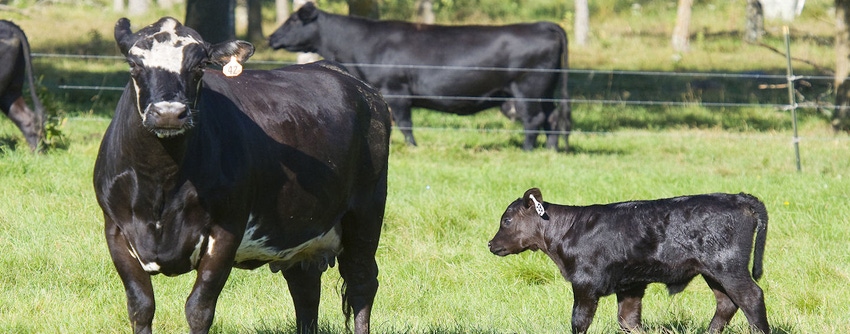
Feeder cattle markets this fall are suggesting much higher rewards for heavy cattle than light ones.
The value of gain is significantly higher for heavy feeder cattle as weights move up through classes, suggesting feeders are paying a premium for heavier cattle and producers who can put that weight on economically should considering doing so, says Derrell Peel, Oklahoma State University Extension livestock marketing specialist.
The table accompanying this story shows a contrast in calf prices between feeders weighing 400-550 pounds, and feeders 600 pounds and up, Peel notes. He regularly tracks value of gain.
For the lightweight calves, the price drop from 400 to 550 pounds is a fairly typical price rollback of about 9-10%. In contrast, from 600 to 850 pounds, there is virtually no rollback, Peel says.
In fact, the price of 600 pound steers is slightly less than heavier animals up to 850 pounds, he adds. A lack of feedlot and stocker demand for the middle weights is leaving prices for 550 to 750 pound steers low, relative to the lighter and heavier animals on either side. As a result, the incremental value of additional weight is significantly higher at weights over 600 pounds, resulting in sharply higher value of gain at heavier weights.
The general signal in this market is for cattle to remain in the country for additional weight gain before entering feedlots at heavy weights.
Peel says, "Retained ownership may be attractive for cow-calf producers, depending on calf weaning weights and management flexibility."
He says at 450 pounds, the value of the next 100 or 150 pounds is relatively low because of price rollback. This means the initial value of weight gain is less than $1 per pound up to 600 pounds. Above that, however, additional weight captures the higher value of gain and brings up the average or cumulative value of gain for weights up to 850 pounds.
This means a decision to retain ownership might depend on how much additional weight can be added to the calves. Certainly, the cost of gain in relation to these likely values of gain should be considered in that equation.
Peel says the current market conditions also suggest opportunities for stocker operators and backgrounders. Among other things, he says it suggests the best buying opportunities are for animals somewhat heavier than typically purchased for winter grazing. The sharp price rollback (low initial value of gain) for 450-pound stockers is less attractive than buying animals at 550 pounds or heavier.
Peel adds to keep in mind the current feeder price pattern is an anomaly that will likely be corrected as arbitrage opportunities are exploited. By itself, that realignment of feeder prices will only help the value of retained calves or stockers because the value of the middle-weight animals will rise relative to the light and heavy weight feeders.
"Of course that takes time and overall market risk is a different issue that must be considered as well," he concludes.
About the Author(s)
You May Also Like




